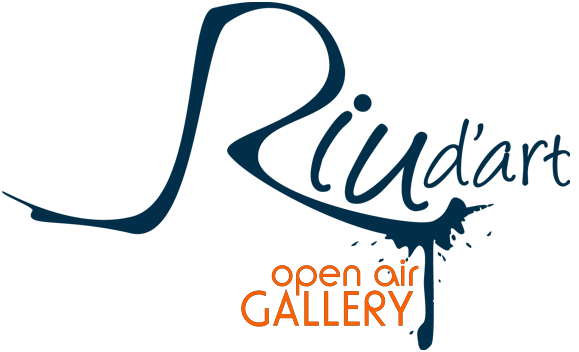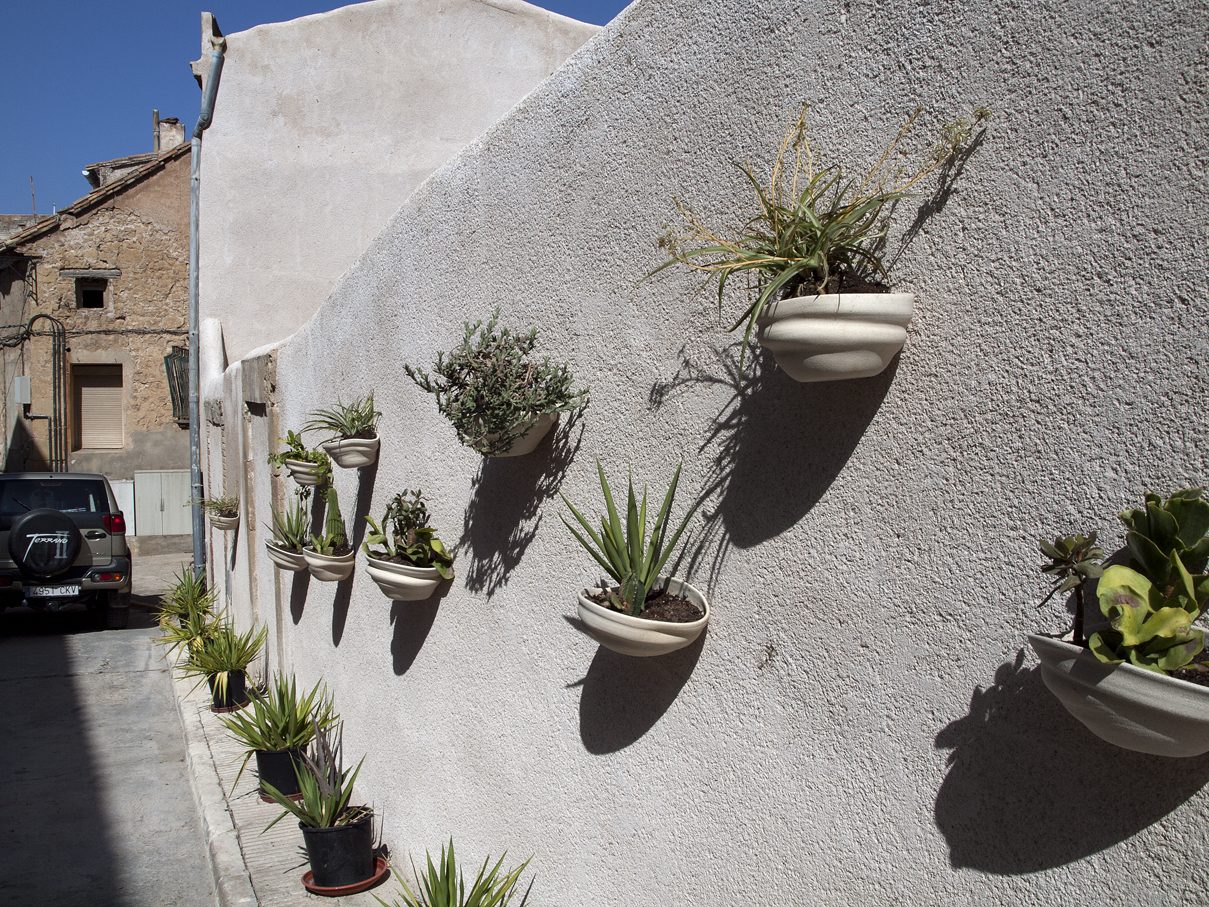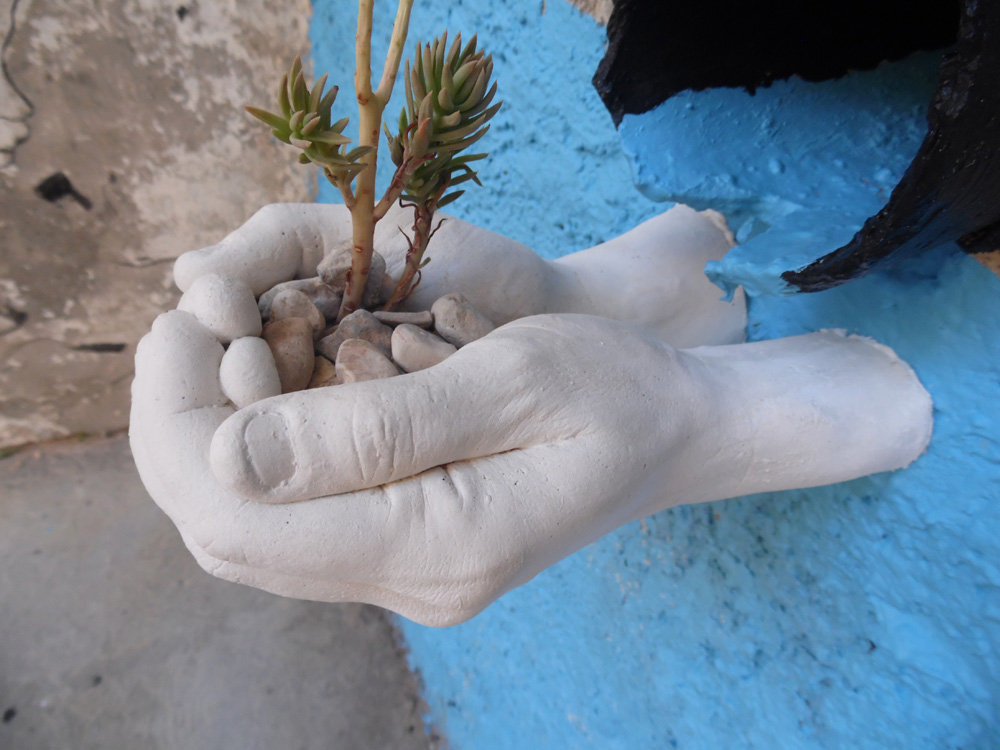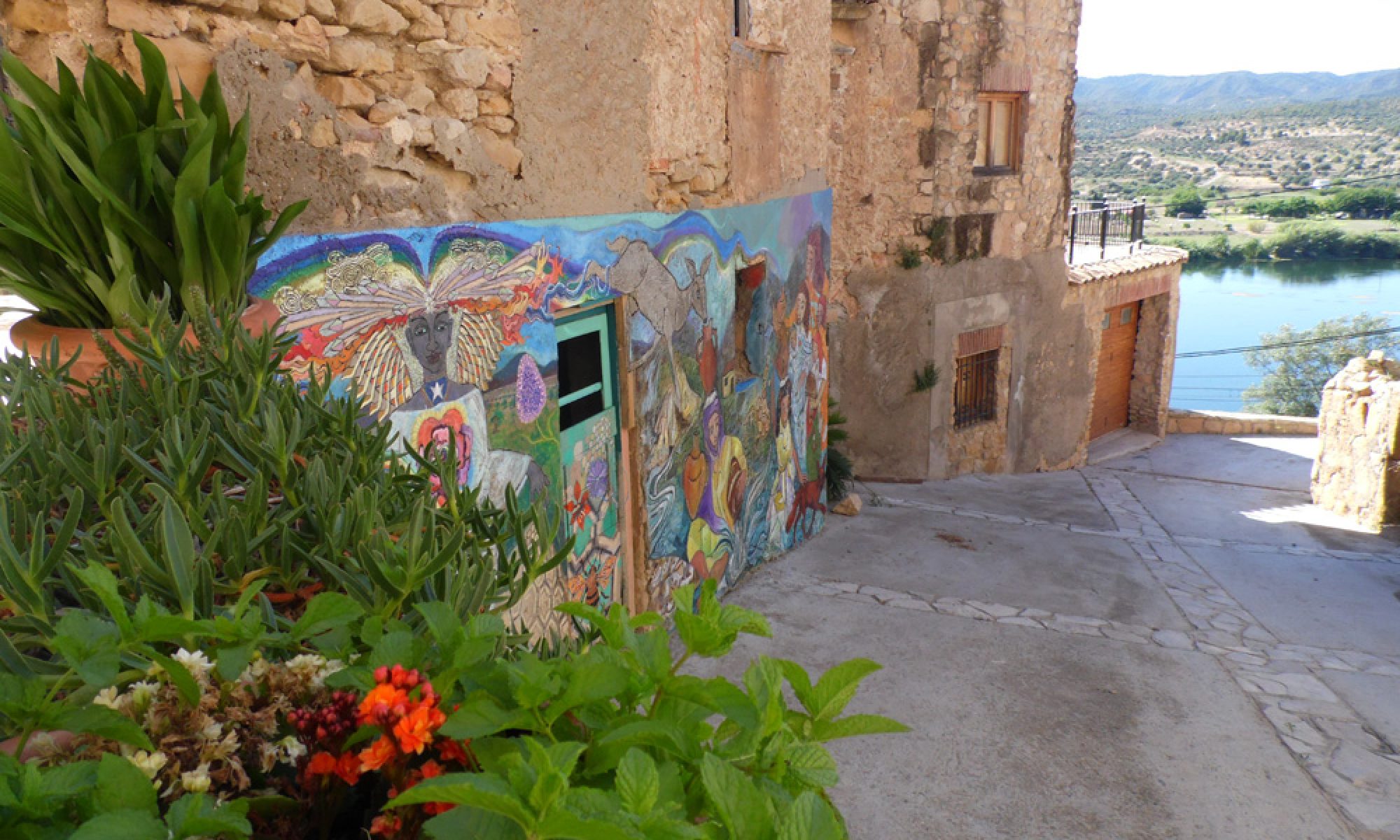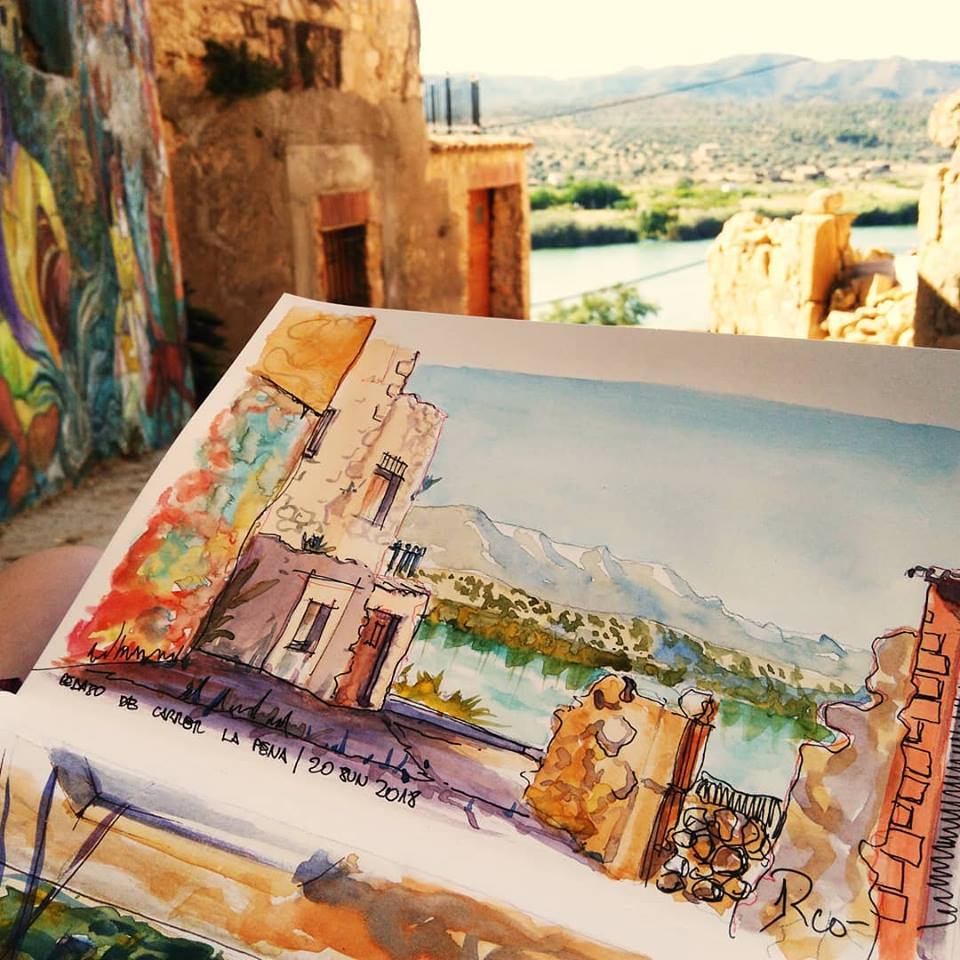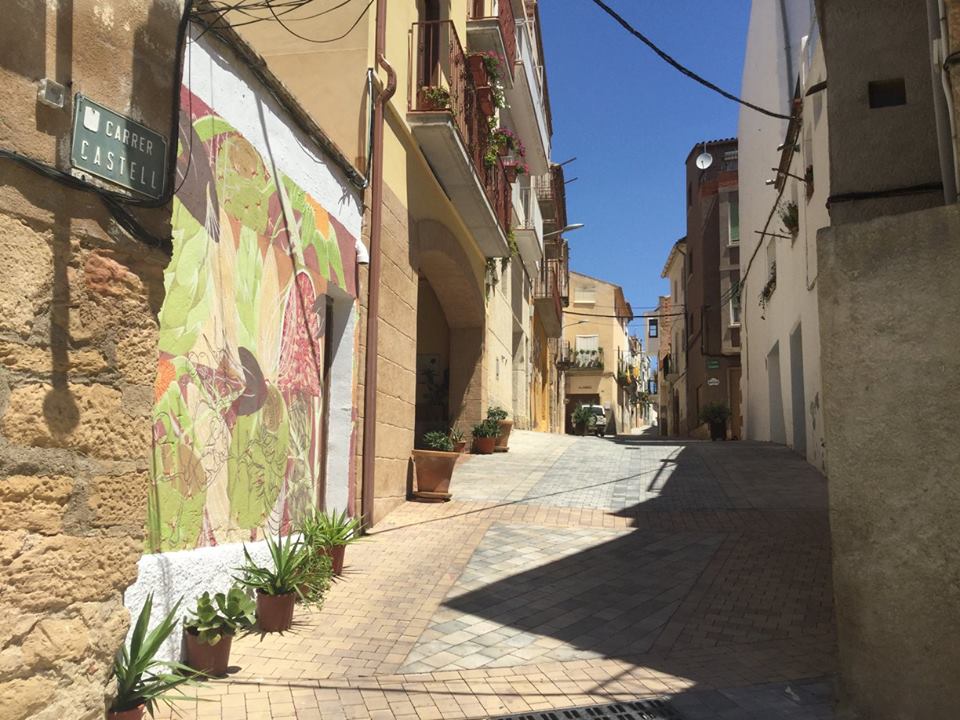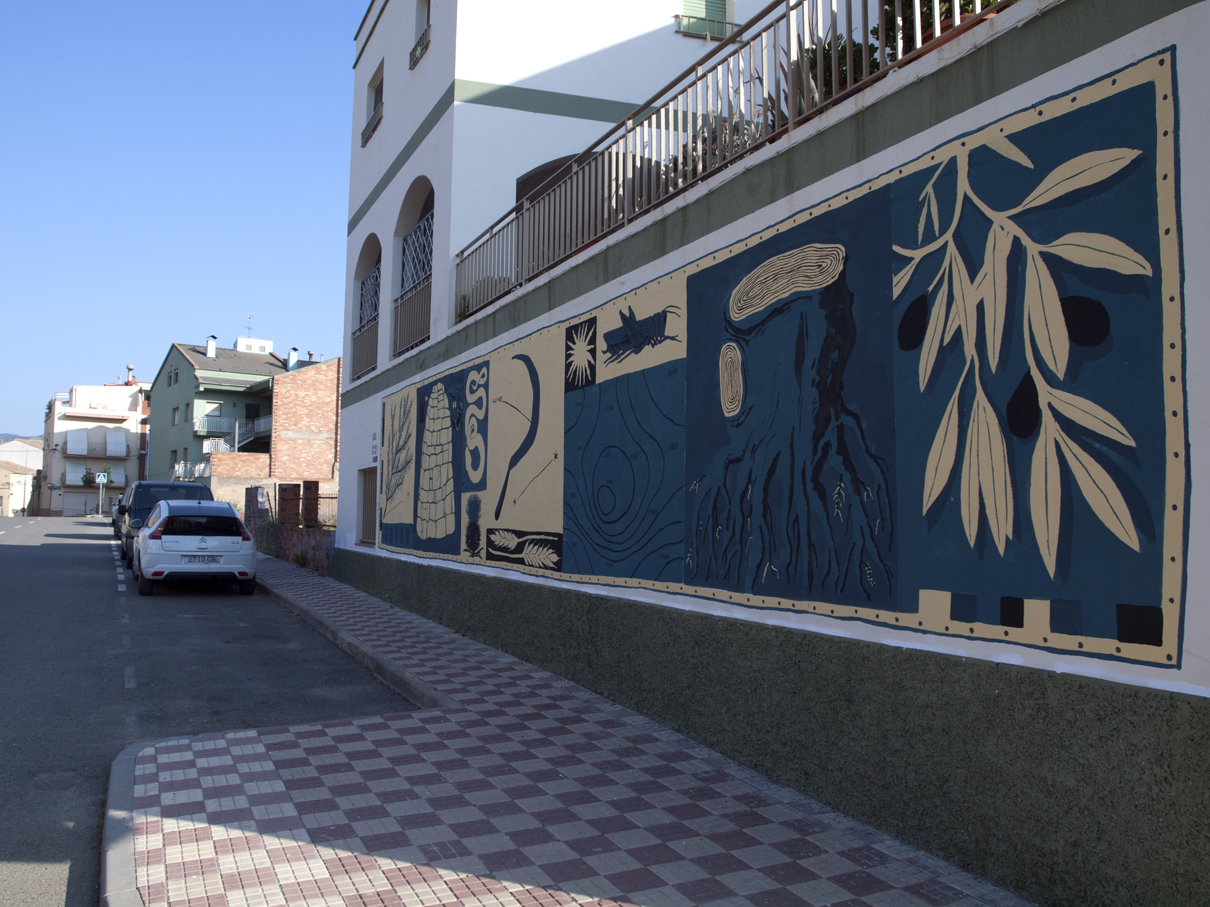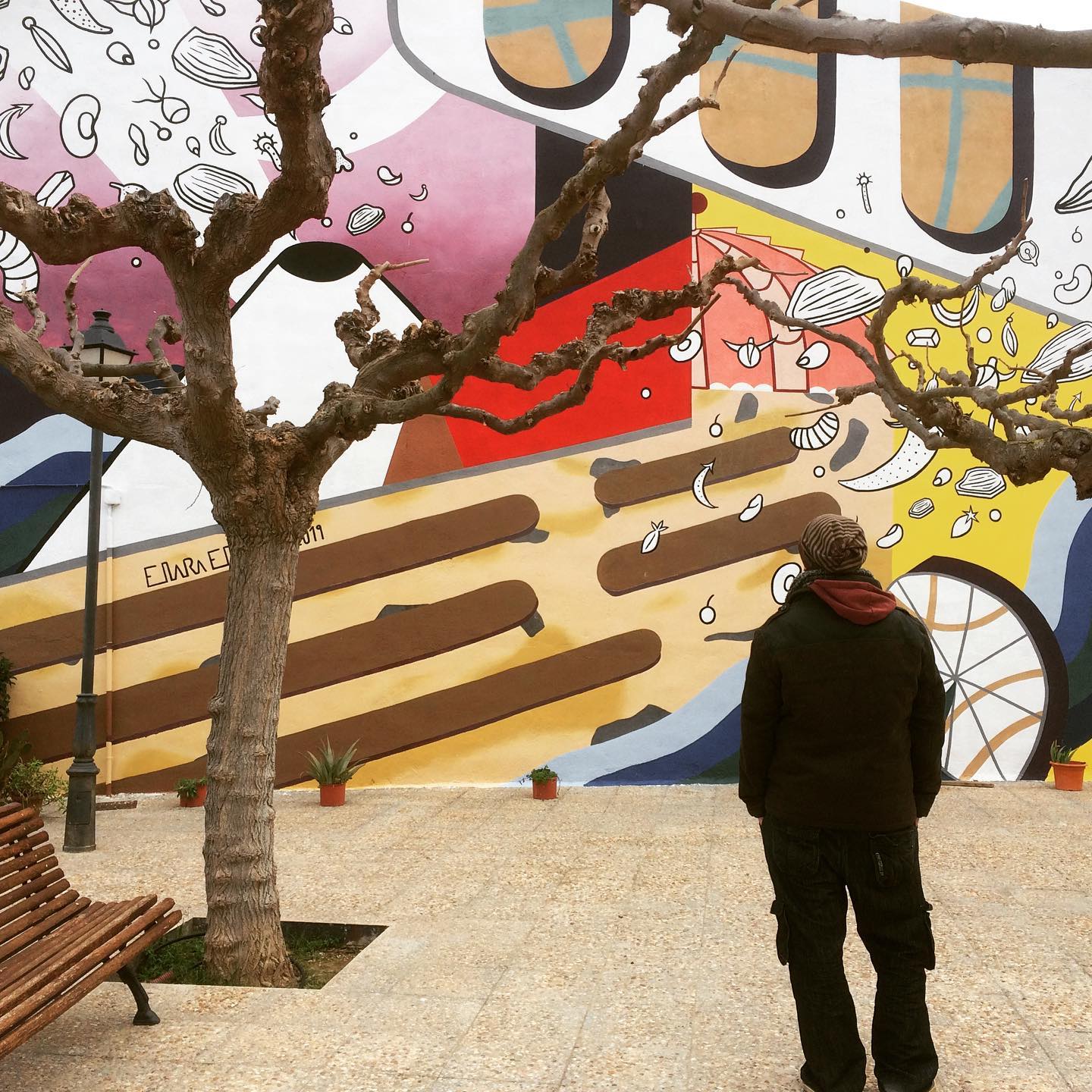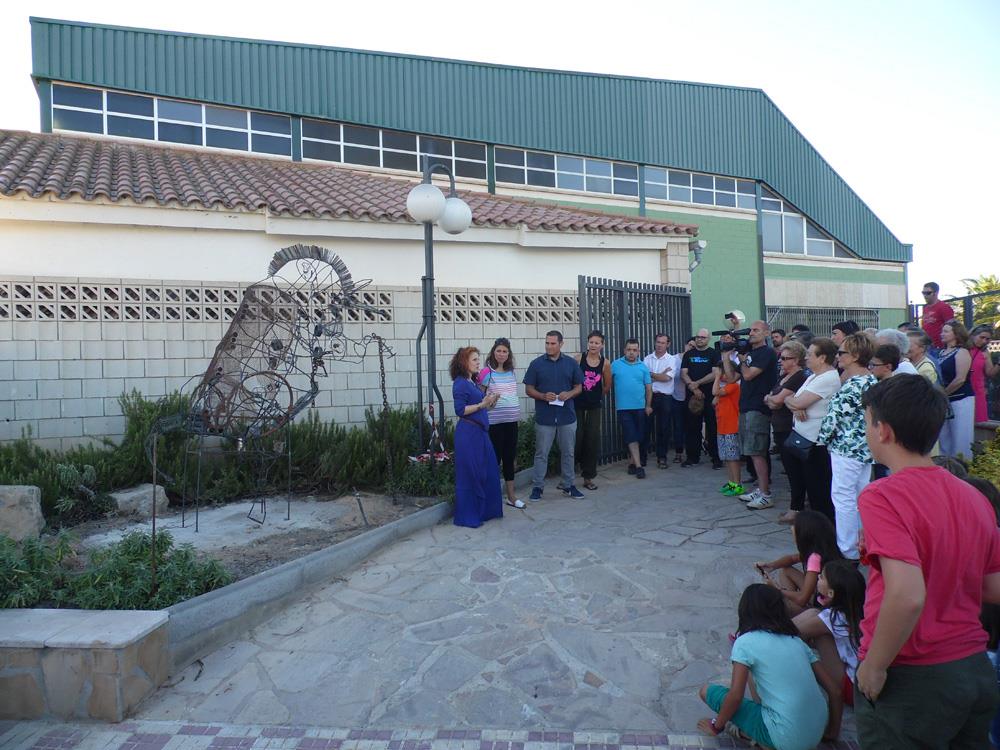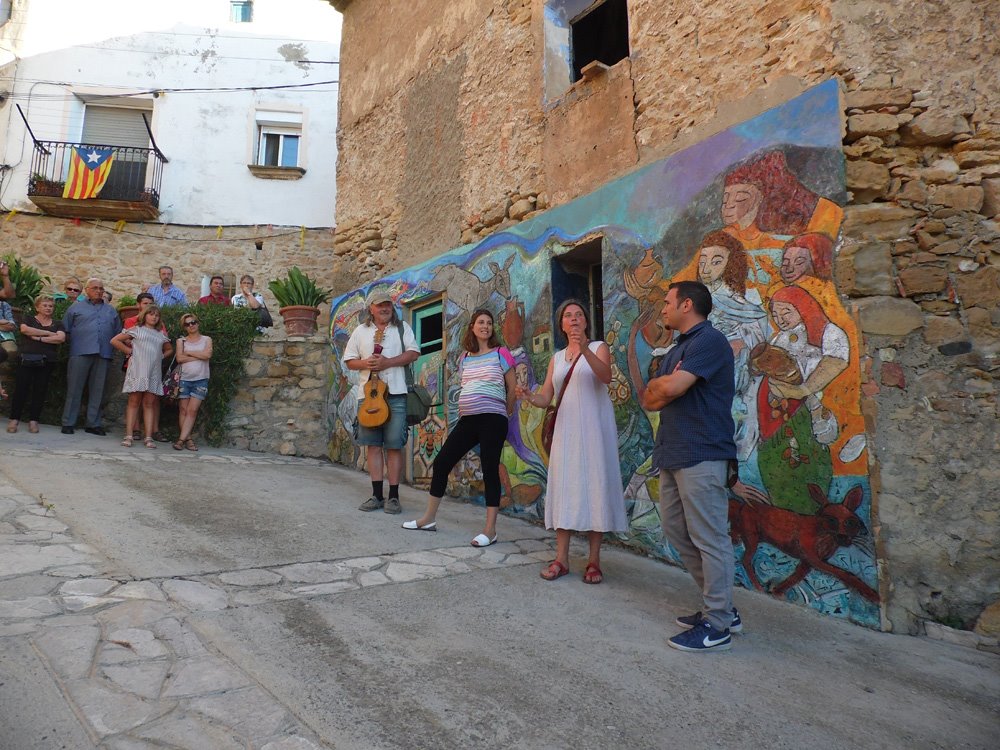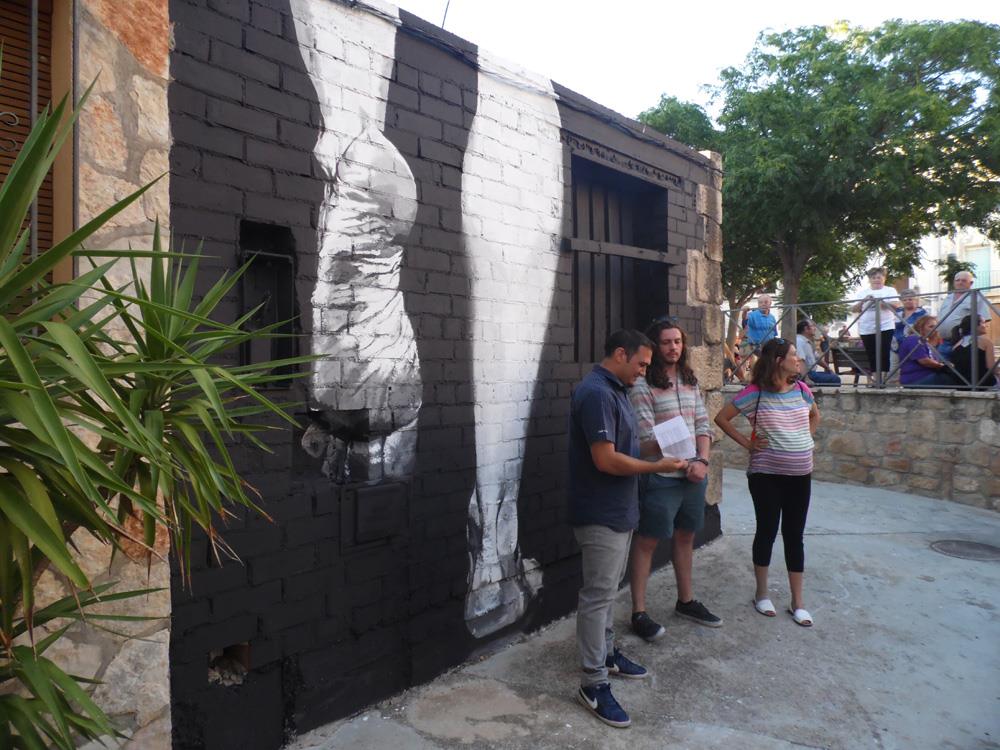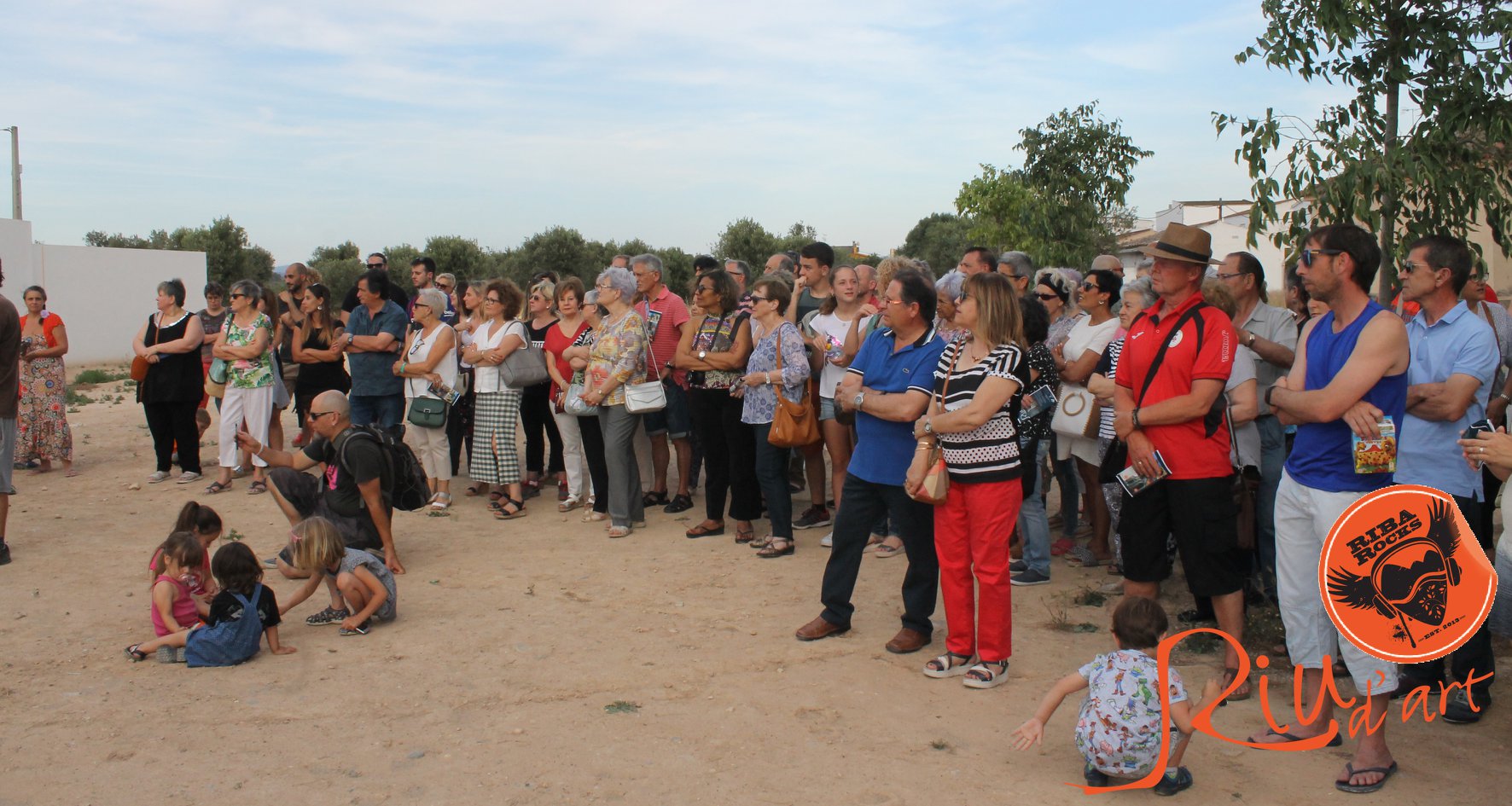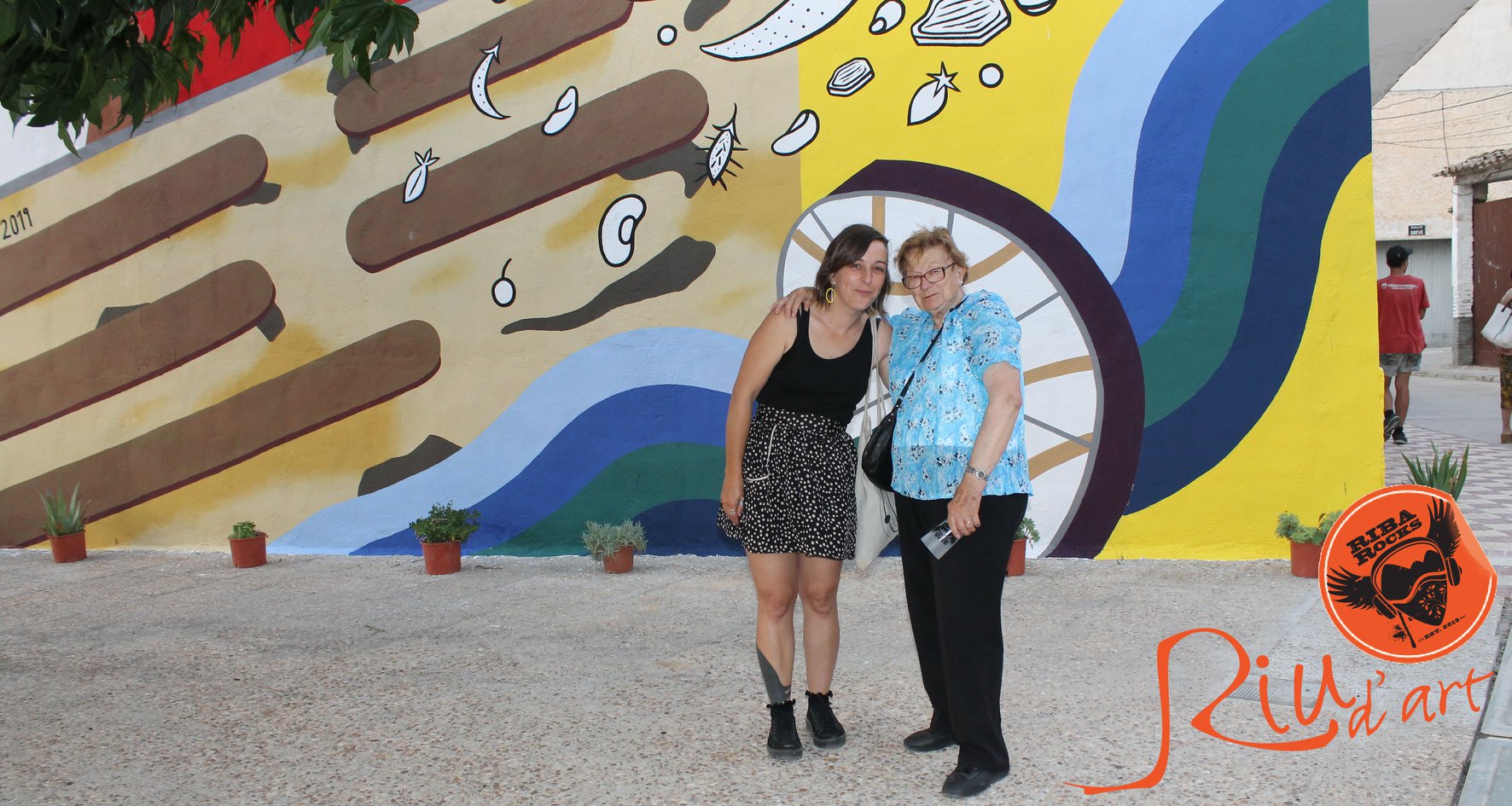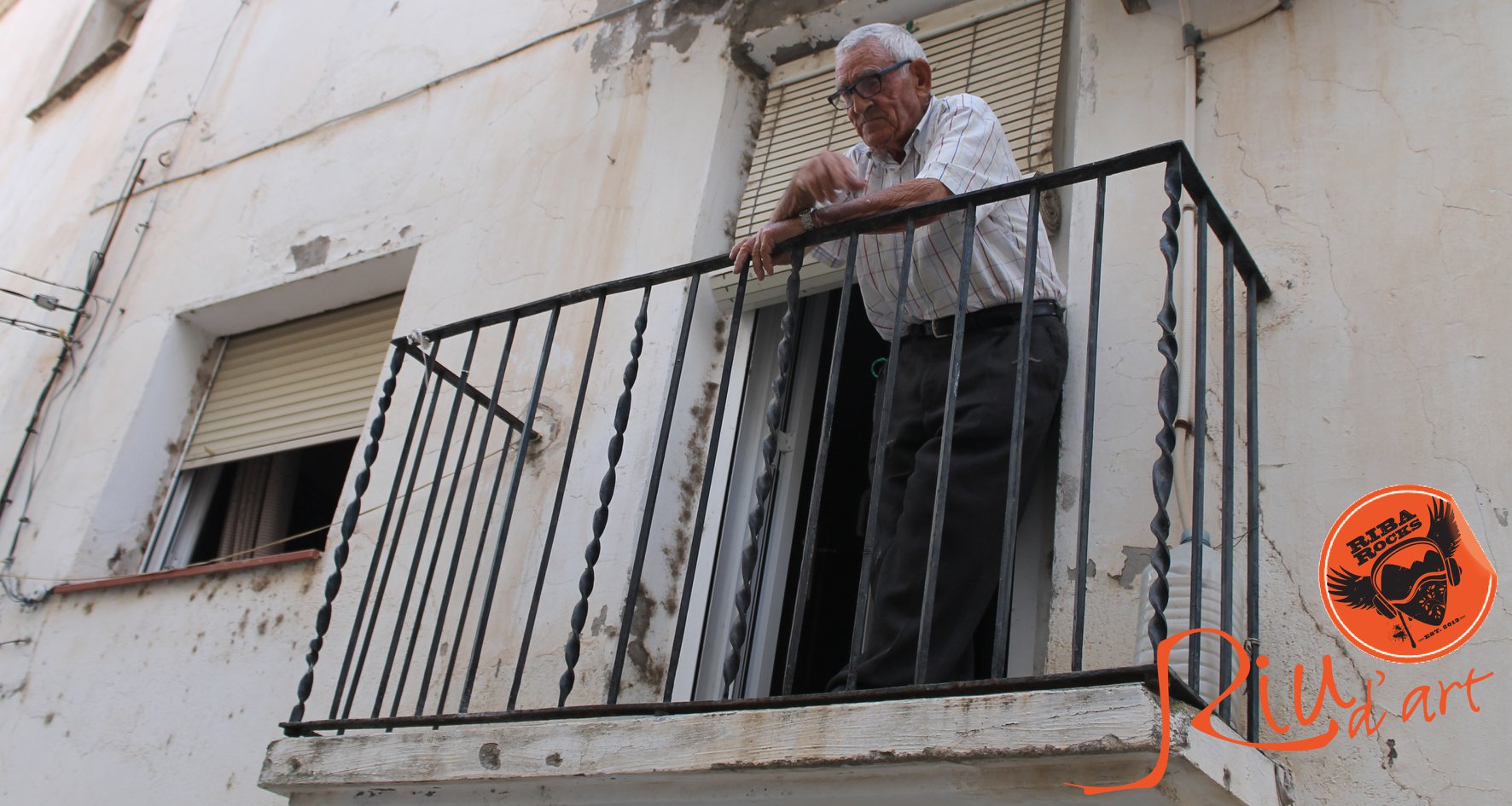Carys Wilson 2018
map of all of the Riu d’art artworks
‘Take time, walk slow, notice the treasures all around you’
In 2018, British artist Carys Wilson embarked on a creative journey that would ultimately give birth to a mesmerizing work of art. Immersed in the natural beauty of her surroundings during a residency, Wilson’s daily walks along the river became a source of inspiration, offering glimpses of intricate structures in nature—be it plants, flowers, or fruits—that captivated her artistic sensibilities. Armed with Juniper charcoal, Wilson meticulously rendered these found objects, each stroke imbued with a sense of reverence for the organic world.
The culmination of her explorations is a masterful abstraction of color and form, where the essence of nature is distilled into a mesmerizing composition that transcends literal representation. Through Wilson’s adept manipulation of charcoal and her keen eye for detail, the final work becomes a testament to the transformative power of artistic interpretation. As viewers gaze upon this evocative creation, they are invited to immerse themselves in a world where the boundaries between reality and abstraction blur, leaving space for contemplation and wonder.
Born 1976, Leicester, UK. Lives and works in Penzance, Cornwall, UK.
The subject of Wilson’s creative practice is her physical and emotional experience of running and walking in the landscape. ‘The nature of the self can only be understood through walking’ (Andrews, Kerri Wanderers). Wilson’s use of traditional materials connects her to her paintings and to nature. The physical exertion of disciplined and daily exercise, alongside the domestic work of grinding and blending gesso, pigments and egg tempera, filters into the shapes and marks she makes when drawing. In a wider sense she explores her own female experience, by pushing her body physically and emotionally, as her paintings become direct responses to, and memories of, her relationship with the landscape.
Handmade egg tempera, oil paint and traditional gesso, although time consuming to prepare, are tactile surfaces to work on and paint with. The smooth gesso, once sanded and polished, becomes a delicate and precious surface, even though it has undergone a rigorous process to build up the many layers. The preparation of surfaces and paint becomes a ritual at the start of each working day, greeting her materials before the painting begins.
Wilson is engaged with the physical process of making a drawing: observing, decision making, mark making, erasing, layering, dissolving. Excited by the time experienced in a drawing, a palimpsest, Wilson seeks a balance between scrutinizing a form, and building up webs of lines, marks and mistakes that can be covered or uncovered. Wilson’s practice stems from a background of academic drawing of the figure both in life class and studio settings. Constantly looking, for detail, for a whole shape, for a simplification, Wilson is excited by the accumulative process of making a drawing; lines that are crucial and then become superfluous as the drawing evolves, and she starts to look more carefully. Working directly from observation has always remained central to her practice, yet she began to find a frustration in working from the model, of drawing an anonymous body placed a long distance from her and her charcoal. The artist seeks a greater connection, not with the model, but with herself, a visual conversation that needs something more personal. The experiential side of making a drawing is becoming increasingly important, turning towards herself as a starting point.
Wilson is inspired by the layering process inherent to drawing. A drawing becomes an architectural dig, a web of lines and marks, evidence of time spent looking and re-evaluating. Many marks remain, some disappear, others become ghosts underneath. They become a spatial map of the time spent within a drawing. The artist wants to see mistakes, to see the decision making process, to see the honesty and human qualities in a drawing. She wants to see what is happening underneath a surface.
Working from her studio on the outskirts of Penzance in West Cornwall, Wilson is currently a recipient of Cultivator Cornwall EU funding.




